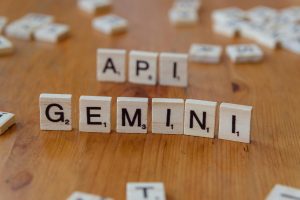The Great AI Lock-In Has Begun
The Dawn of the Great AI Lock-In Era
As we step further into the age of artificial intelligence, a pivotal phenomenon known as the “Great AI Lock-In” is beginning to take shape. This term refers to the inevitable commitment that organizations, developers, and users make to specific AI technologies, platforms, and ecosystems. The implications of this trend are profound, affecting everything from innovation speed to market competition.
What is AI Lock-In?
AI Lock-In occurs when entities become heavily reliant on a particular AI system or framework, often due to the unique advantages it offers, such as advanced capabilities, integration ease, or extensive training data. This reliance can lead to various outcomes, including reduced flexibility for users and developers, potential stifling of new innovations, and the emergence of monopolistic tendencies among major players in the AI landscape.
The Driving Forces Behind AI Lock-In
Several factors contribute to the growing prevalence of AI Lock-In:
-
Data Dependency: Organizations often find themselves tied to the specific datasets that make a particular AI solution effective. Moving to another system may mean losing the competitive edge that comes from proprietary data models.
-
Integration Challenges: Many businesses invest significant time and resources into integrating AI technologies within their existing workflows. This integration can create a psychological and financial barrier to switch to alternative solutions, locking them into specific platforms.
-
Community and Support: As more organizations adopt specific AI tools, a strong community and robust support ecosystems emerge around these technologies. This growth can further discourage users from exploring other options, fostering a sense of loyalty based on community engagement.
-
Success Breeds Adoption: When certain AI frameworks or tools demonstrably succeed in delivering tangible results, the momentum can lead to widespread adoption, creating a ripple effect that locks more entities into using the same technology.
Implications for the Future
The ramifications of AI Lock-In are extensive. While it can drive initial growth and adoption of AI solutions, it also risks creating stale innovation landscapes where only a few dominant players maintain control. Furthermore, the more we rely on specific AI methodologies, the harder it may become to pivot or adapt in an increasingly dynamic technological environment.
Navigating the Challenges Ahead
As industries grapple with the challenges of AI Lock-In, it becomes crucial to prioritize flexible design, interoperability, and encouraging open-source initiatives. Organizations must remain vigilant to avoid slipping into a state of complacency. By fostering a culture of adaptability and continuous learning, companies can mitigate














Post Comment